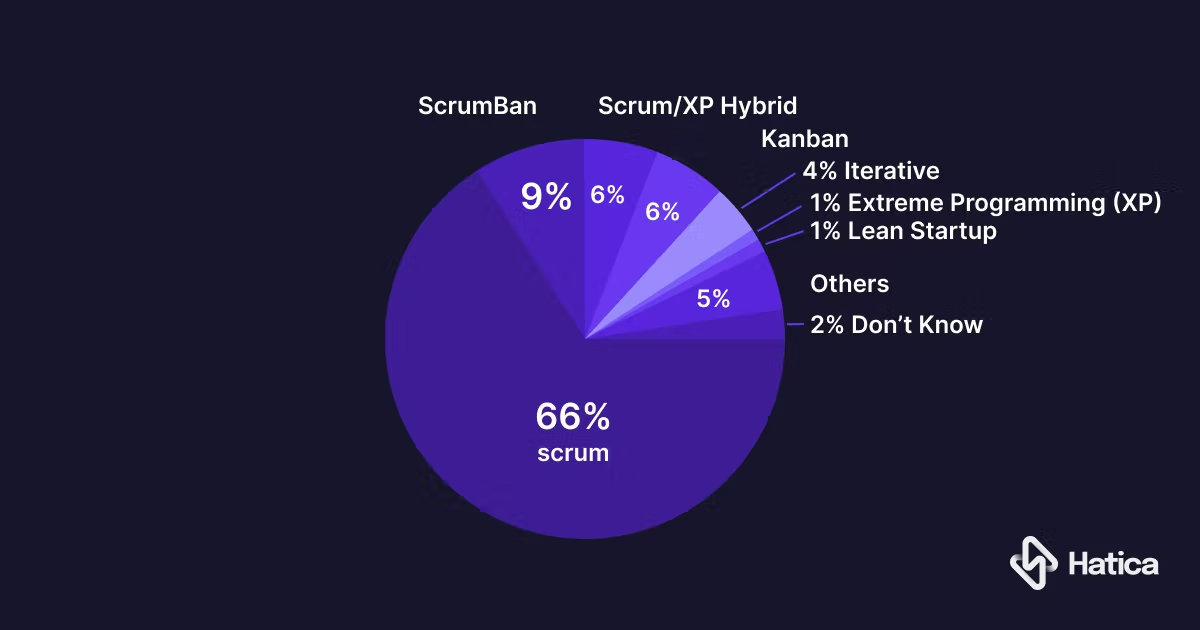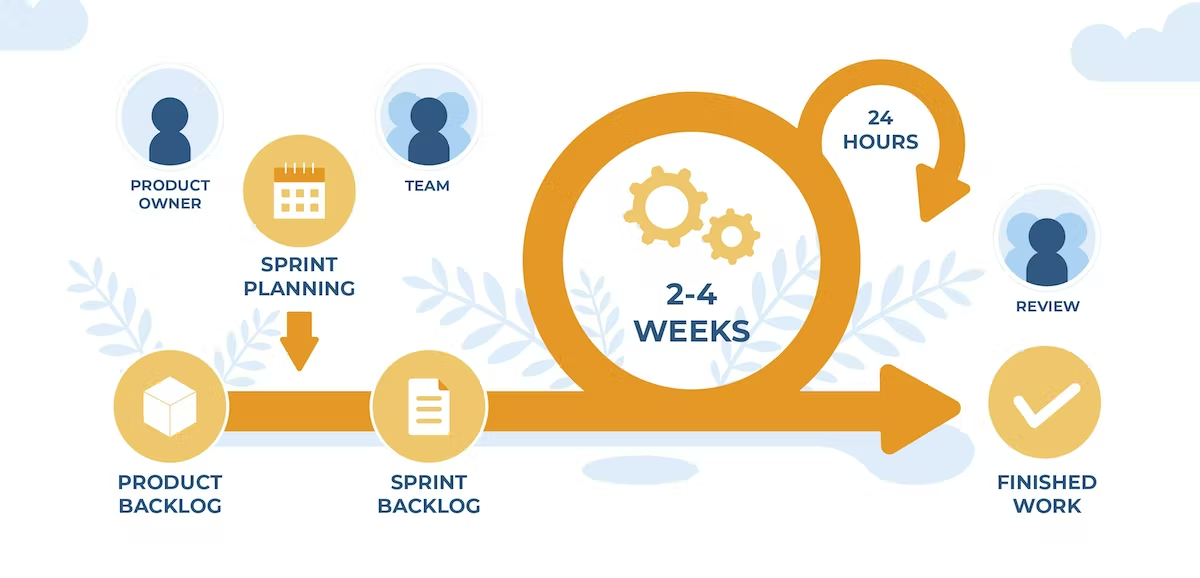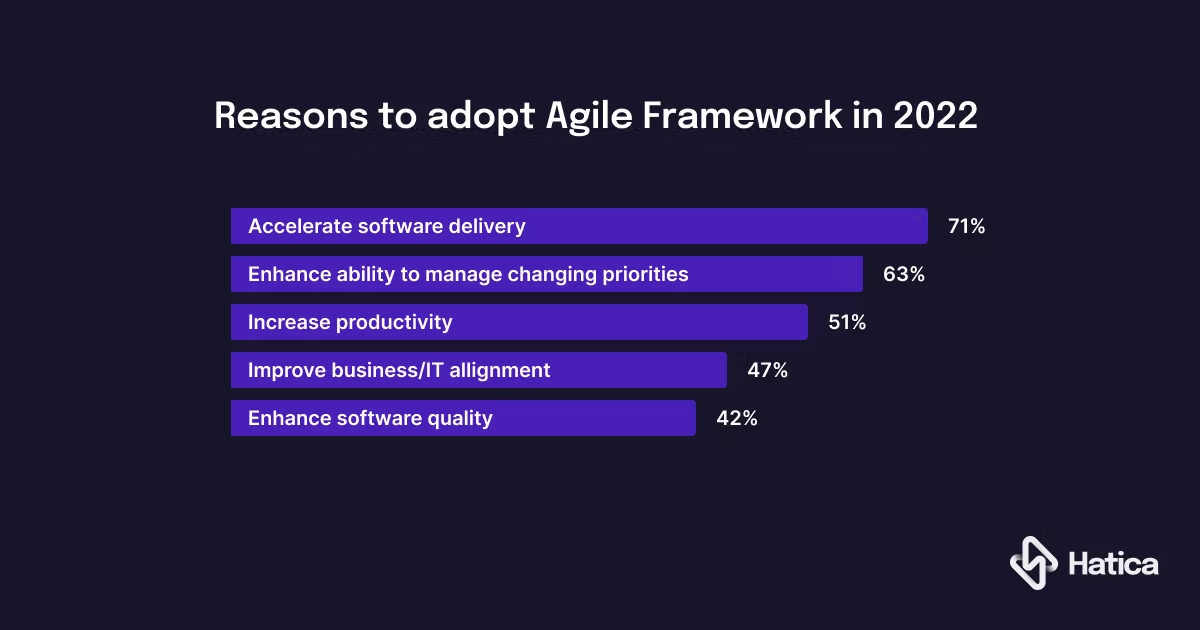Agile Scrum and the New Way of Work in 2023
Learn more about the basics of Agile Scrum and how teams can use the methodology for continuous improvement and unleashing excellence at the workplace.
Join the DZone community and get the full member experience.
Join For FreeThe success of a software development process depends majorly on delivering projects and meeting deadlines. Or so it was always believed. However, working in such am environment resulted in the loss of quality of work, excessive reworks, and increased pressure on the software developers. In an attempt to solve this issue and to set up a much better working methodology, the agile way of working took form.
The Origin of Agile
Twenty years ago, 17 people from around the world gathered at a ski resort in Utah and created what we know today as Agile Software Development Manifesto. The core value of this new alternative to the traditional project management process was to place people and values at the core and work together to achieve results. The Agile approach to software development focuses on completing the project with iterations and constantly focuses on improvement and collaboration. The founding group that called themselves the Agile Alliance went on to create four central values of the Agile Software Development Manifesto:

Unlike the waterfall approach, Agile methodology divides work into actionable items, called sprints, enlist feedback and reprioritize work as per business needs and market changes.
List of the Most Popular Agile Methodologies
The Agile approach focuses on achieving the goal of breaking the project into iterative blocks of work that focuses on continuous delivery. Below are the four major methodologies that highlight the Agile way of working:
1. Scrum
One of the most popular Agile methodologies, the Scrum way of working, aims at breaking the entire development cycle into smaller cycles called sprints, which have variable completion rates. These completion rates are determined by the sprint velocity, which is the average of time it takes to complete all the sprints involved in the development process.
Key Focus
The Scrum methodology focuses on continuous development with insights into productivity across the sprints and also the blockers in the development process. The Scrum process also fosters better collaboration between teammates and consists of a Scrum master who manages the stand-up meetings to understand the progress and issues in the development process.
2. Kanban
This visual form of workflow management originated in the manufacturing sector and later found its application in the software development process. This methodology of the Agile development process utilizes visual cues to provide visibility and track progress across the various stages of the development process.
Key Focus
Like the predecessor, the Kanban methodology focuses on continuous delivery with insights into the upcoming tasks through the Kanban board, which consists of the process flows in column view to deliver the projects on time. Users can get real-time visibility into the development process at any given time, along with a view of the development workflow.
3. Extreme Programming (XP)
Extreme Programming also emphasizes dividing the entire project into shorter development cycles and gathering customer feedback and requirements at the end of each iteration. This makes it easier to incorporate any changes or includes new requirements without any hassle.
Key Focus
This Agile methodology has a keen focus on constant communication and customer satisfaction. This is achieved through continuous testing after each iteration, thus ensuring customer demands are met and there are no changes at the end of the development cycle.
4. Crystal
The Crystal methodology of Agile development methodologies comprises a family of functionalities that include Crystal Yellow, Crystal Clear, Crystal Red, Crystal Orange, and more. All of the above have a unique framework that is categorized by various factors, such as the criticality of the project, the size of the team, and the different priorities in the project.
Key Focus
Like all the Agile methodologies above, the Crystal approach focuses on the quick and continuous delivery of projects and customer satisfaction.
According to the 16th Annual State of Agile Report, Scrum has been voted the most popular Agile way of working, with 66% of the 4,182 respondents identifying it as the methodology they follow.

Benefits of Agile Scrum Software Development Cycle
According to Project Management Institute, 71% of U.S. companies are using Agile methodologies to manage their software development cycle. So it is safe to say the agile way of working is the most common in software development. The benefits of the Agile way of working are vast, from faster time to market and better visibility to improved customer satisfaction. The Agile framework’s focus on collaboration and continuous improvement also makes it an efficient approach to modern software development. Here are other ways how it drives digital transformation with visibility into improvement through:
Flexibility
Breaking down the entire SDLC process into smaller cycles provides better control and flexibility as teams can observe one cycle, gather inferences and gain insights into making the iteration process more efficient.
Adaptability
The iterative framework enables teams to adapt to new requirements and processes better, owing to the observations from the gathered data. This also helps in better resource allocation and adaptability across the development cycle.
Process Optimization
The Agile way of working helps managers to optimize the process until the desired result is achieved at the desired time, cost, and quality. Optimization is possible due to the focus of the Agile process on continuous delivery and improvement.
Risk Mitigation
The insights generated after every iteration, equipped with traceability and collaboration of the teammates, help efficiently uncover the blocker in the development process. Managers can also track the pattern across the entire development cycle and zero in on issues and hindrances better.

Agile and the New Work Normal
Ever since the onset of the pandemic the world has witnessed massive shifts in the way of working. And though the world has returned to normal to an acceptable extent, the workforce that witnessed a paradigm shift in the way of working has fully adapted to the hybrid and remote way of working. This new normal has been a revolutionary change in the global workforce that is beneficial to both the organization and the employees. This is the future of work and it is defined by the streamlined focus on digitization, data, and people.
The new work environment enables employees to preserve their focus time and maintain a better work-life balance, thus reducing the chances of employee burnout. Coming to software development, the remote and hybrid way of working has cut down the manual efforts in everyday mundane tasks and updates, thanks to automation tools and software that enable them to focus on the tasks and their well-being.
In fact, Agile adoption went up by 33% in the mid of 2020, which is the initial phase of the shift to remote working. According to the 15th State of Agile Report, which was recorded in 2022, 89% of teams are geographically distributed, and working hybrid; this clearly establishes remote working to be the new normal. To help manage this new era of working, managers should adopt a data-rich platform that enables them to drive digital transformation in the software development process and generate data-enriched reports through high integrations. This empowers them to automate processes and focus on people.
However, this scenario is only feasible for organizations that have added an analytics tool to their software arsenal.
Final Words
It is clear that the Agile Software Development Cycle is the future of work. Therefore, organizations should take the first stride to adopt and maximize the functionalities of this popular and efficient framework. To make the process successful, organizations should also utilize other software metrics like sprint velocity, code churn, and other that helps optimize the agile framework and achieve the desired results. However, individually measuring these metrics can be difficult and have limited value. An Engineering Analytics tool solves the issue by providing a platform that efficiently integrates with everyday software tools to gather data, analyze them and provide actionable insights without disturbing the focus time of the teammates.
Published at DZone with permission of Avya Chaudhary. See the original article here.
Opinions expressed by DZone contributors are their own.

Comments